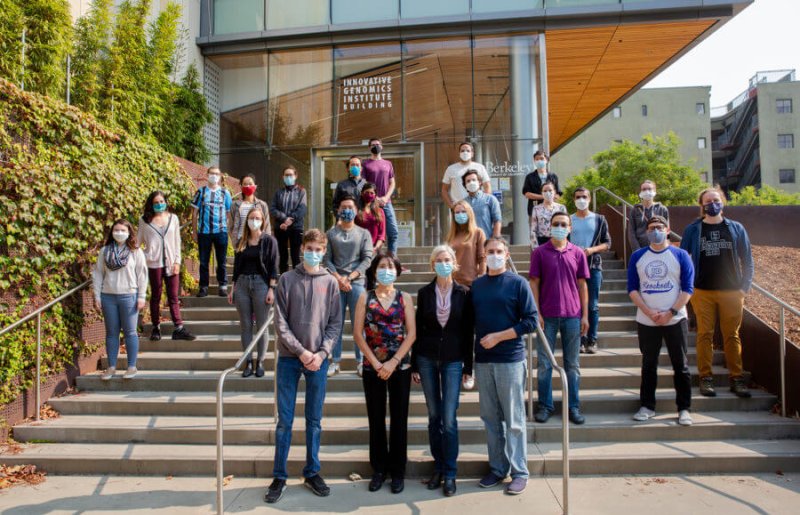UK becomes first to approve Casgevy genetic therapy for blood disorders
SOURCE: HTTPS://INTERESTINGENGINEERING.COM/
NOV 17, 2023
Young gene editors share hopes for the future of the field
SOURCE: GENETICLITERACYPROJECT.ORG
FEB 21, 2022

From a ranch in the American Midwest to a farm in India and a takeout lunch restaurant in New York, three young scientists are maintaining their disparate roots in food and agriculture as they pursue gene editing research to address global issues of food security and severe climate change.
I’m one of them — the one whose roots lie in the East Coast eatery. I recently joined the other two scientists — Maci Mueller and Dr. Navneet Kaur — on an AfS Live webinar to share the source of our inspiration and our hopes for the future of genome editing. It’s a biotechnological approach that enables scientists to accurately and rapidly make modifications at desired genomic regions. Gene editing innovations have been spurred on by the recent advent and application of CRISPR/Cas.
Mueller is a Rockey FFAR Fellow and Ph.D. candidate at the University of California, Davis, where she is exploring the relative advantages of gene editing and conventional breeding to drive the genetic improvement of cattle.
“We can think of gene editing as using molecular scissors to cut and change the DNA or genetic code,” she explained. “And this gene code is what contains the instructions for making and maintaining the different traits of an organism. The great thing about gene editing is that is allows us to make these changes in as little as one generation, which is much faster than traditional breeding methods.”
Kaur makes use of the ease, throughput and reliability of CRISPR/Cas9 in her current research at Rothamsted Research, where she is seeking to address a devastating rice pathogen. Prior to beginning this post-doctoral research, she earned her Ph.D. at the National Agri-Food Biotechnology Institute in Punjab, India, where she applied CRISPR/Cas9 to banana genomes to generate varieties with augmented levels of beta-carotene.
Kaur helped pioneer the use of gene editing in bananas and then applied this system to produce a nutritionally enhanced crop. “After targeting [banana], there was a nearly six-fold increase in the carotenoid content” in the improved varieties, she said.
As a FFAR Fellow and Ph.D. candidate at the University of California, Berkeley, the home of CRISPR/Cas9, I likewise make use of this technology to study development and drought stress tolerance in rice. I’ve edited a gene in rice that was thought to be involved in the development of structures on rice leaves that are essential for photosynthesis and water loss.
“These lines that we have generated are able to conserve more water while also performing the same level of photosynthesis,” I told the audience. I’m looking forward to soon delivering my technology to the field to see if its benefits persist.
Unlike we two crop biologists, Mueller uses CRISPR/Cas9 in animals, applying gene editing in cows to improve animal welfare. She seeks to recreate the genetics of a hornless cow in the Holstein breed, a popular dairy cow that is born with horns. Holsteins are typically subjected to a painful and invasive process of dehorning so they don’t harm one another and are safer for farm workers to handle.
Mueller’s work seeks to bypass this undue animal suffering through the application of gene editing. She also studies how this technology can be rapidly deployed in an industry where animals are typically raised in large pastures.
Kaur, Mueller and I have experienced the transformative potency of gene editing in agriculture via their own work. Our in-depth exposure to gene editing tools has inspired new hope for the future of the field and its value in solving critical world challenges.
As I noted, “My hope is to see gene editing, like conventional breeding, become a mainstay globally and in the communities that could stand to benefit the most from it. I would like to see [this technology] distributed equitably and be given the capacity to make the changes that are important for every community.”
This hope is tempered by the realities of both technical and sociopolitical limitations. The panelists noted that effective solutions will only be achieved with the input of stakeholders, especially farmers.
With personal connections to farmers and producers in the United States, Cyprus and India, we’ve all seen the value of listening well to the end-users of technology. We all agreed that it’s not just about sharing our science, but also listening to the consumer and general public as to what interests they have.
When asked what about our hopes for the future of gene editing, we all expressed measured optimism. While unwilling to minimize the gargantuan task ahead, we remain optimistic that this technology, in coalition with other transformative approaches, is an important piece in solving the larger global puzzle of building a sustainable food system.
Nicholas Karavolias is a Ph.D candidate at UC Berkeley. Follow Nicholas on Twitter @Carrotvolias
A version of this article was posted at Cornell Alliance for Science and is reposted here with permission. You can follow the Cornell Alliance for Science on Twitter @ScienceAlly
LATEST NEWS
Augmented Reality
Hi-tech smart glasses connecting rural and remote aged care residents to clinicians
NOV 20, 2023
WHAT'S TRENDING


Data Science
5 Imaginative Data Science Projects That Can Make Your Portfolio Stand Out
OCT 05, 2022

SOURCE: HTTPS://INTERESTINGENGINEERING.COM/
NOV 17, 2023
SOURCE: HTTPS://GENETICLITERACYPROJECT.ORG/
SEP 05, 2023
SOURCE: HTTPS://WWW.SCIENCEDAILY.COM/
AUG 07, 2023
SOURCE: HTTPS://WWW.SCIENCEDAILY.COM/
JUL 24, 2023
SOURCE: HTTPS://NEWS.MIT.EDU
JUL 20, 2023
SOURCE: BIOSPACE.COM
OCT 27, 2022